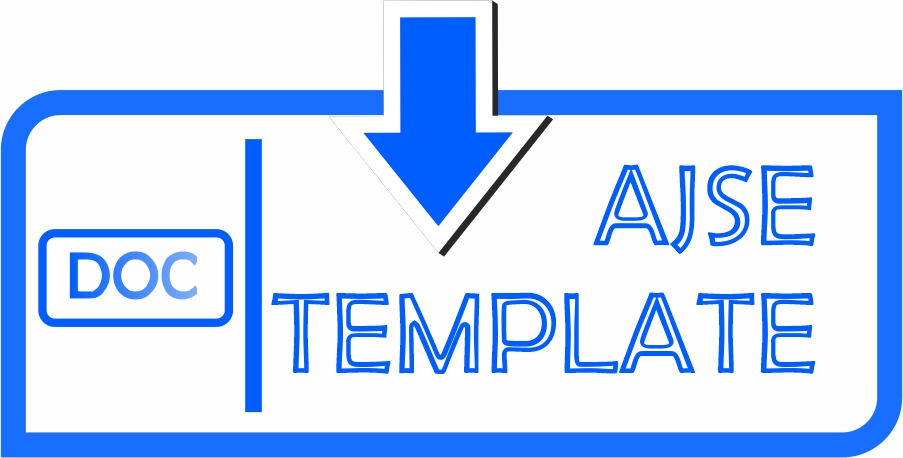CALIBRATION OF 1-D NUMERICAL CODES SOFTWARE FOR SITE RESPONSE ANALYSES
Vienti Hadsari(1*), Adhi Susanto(2), Wahyu Wilopo(3), Giuseppe Lanzo(4), Alessandro Pagliaroli(5), Deepak Chamlagain(6), Ramesh Adhikari(7)
(1) Civil Engineering, Faculty of Engineering, Universitas Atma Jaya Yogyakarta
(2) Electrical Engineering and Information Technology, Faculty of Engineering, Gadjah Mada University
(3) Geological Engineering, Faculty of Engineering, Gadjah Mada University
(4) Geotechnical Engineering, Faculty of Structural and Geotechnical Engineering, Sapienza University of Rome
(5) Geotechnical Engineering, Faculty of Structural and Geotechnical Engineering, Sapienza University of Rome
(6) Geotechnical Engineering, Faculty of Structural and Geotechnical Engineering, Sapienza University of Rome
(7) Geotechnical Engineering, Faculty of Structural and Geotechnical Engineering, Sapienza University of Rome
(*) Corresponding Author
Abstract
Ground response analyses are used to predict surface ground motions for development of design response spectra, to evaluate dynamic stresses and strains for evaluation of earthquake hazards, and to determine the earthquake induced forces that can lead to instability of earth-retaining structures. The effects of local soil on ground motion are commonly evaluated by performing numerical analyses either in frequency or time domains.
In order to evaluate the differences between frequency and time domain analysis, several analyses were conducted for homogenous stiff soil deposit with respective codes which are SHAKE and D-MOD2000. Linear and non linear analyses have been conducted. The non linear analyses with D-MOD2000 code have been carried out by using different frequencies in the Rayleigh damping formulation, i.e. fundamental and predominant frequency. For linear, PGA 0.1g is used in the analysis while for non linear PGA is scaled into three different value of 0.1, 0.3, and 0.5g.
The results for both linear and non linear approach are similar. For the non linear analyses, it is shown that the curves derived using predominant frequency perform better than those using fundamental frequency. Main differences are for non linear approach where the differences between two codes are higher for higher input motion. As the calibration using predominant frequency between the two codes perform good, the respective codes are applied to evaluate soil response in Sant’ Agostino and San Carlo, in terms of PGA, due to May 20th 2012 Emilia Earthquake. There are 139 accelerometric station recorded strong motion. In this analysis, we consider one record which is in Mirandola station, the closest recording station where the Magnitude in epicentral area was 5.9 and 5.8 in Mirandola station. The recorded surface motion in Mirandola is transferred to the bedrock in 112 m depth and used as input motion for the two evaluated sites, San Carlo village and nearby municipality Sant’Agostino on 17 km distance from Mirandola station. The preliminary data presented here shows the PGA recorded in the bedrock of Mirandola station is 0.75g, while in Sant’Agostino and San Carlo is 0.92g and 0.81g.Keywords
Full Text:
PDFReferences
Arslan,Haydar., Siyahi,Bilge. (2006). A Comparative Study on Linear and Non Linear Site Response Analysis. Environment Geology, 50, pp. 1193-1200
D, Albarello., E, Lunedei., D, Pileggi. 2012. Misure di Sismica Nelle Aree Emiliane Interessate dalla Sequenza Sismica del Maggio-Giugno 2012 (Relazione Preliminare). Dipartimento di Scienze della Terra. Universita degli Studi di Siena
Ding,Yoqin., Pagliaroli,Alessandro., Lanzo,Giuseppe. One Dimensional Seismic Response of Two-layer Soil Deposits with Shear Wave Velocity Inversion. 2008. Seismic Engineering Conference Commemorating the 1908 Messina and Reggio Calabria Earthquake
Hashash, Youssef M.A., Park,Duhee. Soil Damping Formulation in Nonlinear Time Domain Site Response Analysis. 2004. Journal of Earthquake Engineering, 8(2), pp. 249-274
Kramer, S.L. 1996. Geotechnical Earthquake Engineering, Prentice Hall, p.653
Lanzo,G., Pagliaroli,Alessandro., Elia,B.D. 2009. Numerical Study on the Frequency-dependent Viscous Damping in Dynamic Response Analyses of Ground. Department of Structural and Geotechnical Engineering, University of Rome “La Sapienza” Rome, Italy
Matasovic, Neven., Ordonez, Gustavo A. 1993. D-MOD2000, A computer program for seismic response analysis of horizontally layered soil deposits, earthfill dams and solid waste landfills
Rossetto, Tiziana., Alexander, David., Verrucci, Enrica., Ioannou, Ioanna., Borg, Randolph., Melo, Jose., Cahill, Bryan., Kongar, Indranil. 2012. THE EMILIA (ITALY) EARTHQUAKE OF 20th MAY 2012. EPICentre Field Observation Report. EPI-FO-200512
Seed, H.B., and Idriss, I.M. 1969. Influence of soil conditions on ground motions during earthquakes, Journal of the Soil Mechanics and Foundations Division, Proceedings of the American Society of Civil Engineers, Proceeding paper 6347, Vol. 95, No. SMI, p. 99-137
Article Metrics
Refbacks
- There are currently no refbacks.
Copyright (c)
Universitas Gadjah Mada


